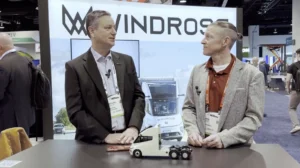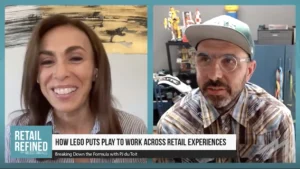The Future of the IoT Employee
The whole world is practically connected. By 2020 there will be 6 billion smartphones in the world and nearly 31 billion connected IoT (Internet of Things) devices.
Most people on this earth will have a smartphone by then. We’re in an era of explosive growth in connectivity that’s creating massive productivity gains for many industries. IoT is on the rise, with everything from refrigerators to oil wells being connected with smart sensors. Retailers and manufacturers are connecting their products with RFID tags. Consumers are connecting more and more of their lives, with
intelligent assistants at home, transforming home computing forever. And enterprise employees are well connected, using new tools like Slack to collaborate in the office.
Mobility Has Left The Hourly Worker Behind
However, there is one large group of our population that has been left behind by the mobile revolution. Over 70% of the U.S. GDP is generated from the services industry, and the majority of those distributed hourly workers don’t have access to any type of modern mobility solution. Instead they use two way radios, which were invented in 1923. Why do they use antiquated technology when the rest of the world has gone mobile?
And when you look deeper in retail, you’ll see that only 11% of associates have access to inventory and other enterprise information via a smartphone or tablet. Ultimately, smartphones have failed as the mobile device of choice in retail because:
- High costs needed to purchase and maintain hardware and software – Providing a smartphone to every associate is very expensive, full stop. And maintaining 100% coverage across every store in perpetuity requires a significant investment by the retailer.
- BYOD pitfalls and labor laws – While the thought of employees using their own smartphone to access employer-approved apps and data is appealing, many labor laws get in the way of successful BYOD deployments. When a phone breaks at work, who is responsible for the repairs? What happens when employees do work at home when they are not clocked in? These issues and many more make BYOD a challenging replacement to an employer-provided solution.
- Screens create distractions – Holding a smartphone or tablet means your arm has been relegated to a device holder. Using a smartphone or tablet requires the employee to stop their work, put down whatever is in their hands, pull out their device, and with their heads down they type and search on a tiny keyboard. This experience is poor for an associate, and also for the customer.
New paradigms of offering mobility solutions, such as Theatro’s voice-controlled mobile app platform for the hourly workforce, can change the retail landscape by enabling every associate to be connected to everyone….and every “thing”….with just the power of their voice. When everyone is connected, the hourly employee becomes part of the IoT infrastructure, further enabling the digital transformation of the store.
The IoT Employee Drives Business Results…
Once every associate is connected to the network, they become part of the IoT infrastructure. In order for the hourly employee to be viable in this new ecosystem, the employee must always be connected and be able to share and consume data from other systems. When this occurs, employers benefit by having:
- A platform that enables people to take action – One of the biggest barriers to IoT adoption is ensuring the appropriate action occurs when expected. There is no sense in having a robust sensor array to monitor a physical environment, only to fail to take action during, and even before, a serious event occurs. When distributed employees are always connected, they are able to respond immediate to requests from other systems, based on context such as the skill set of the employee, their location, and their role.
- A hub where all point solutions converge – In retail, as point solutions continue to emerge and as enterprise software suites continue to expand, the integration points between these apps tends to occur only at HQ, where leadership can orchestrate complex changes in operations or dictate changes in process based on historical performance. Unfortunately, these integration points are not in the physical store, and therefore do not benefit the hourly employee in real time. By having a single store platform where every hourly employee is connected, retailers can integrate all enterprise and point solutions into one central hub, giving hourly employees unfettered access to information while on the sales floor. This model is similar to WeChat, which gained adoption as a messing platform and transformed into a hub for customer engagement, linking messaging, financial services, entertainment, commerce, and consumer goods and services all under one platform.
- New sources of actionable data – IoT is not just about connecting things like refrigerators or door sen
sors. When employees are always connected and part of the IoT infrastructure, new data on employee forensics is created and shard with other IoT endpoints. This meansthat along with the IoT network communicating action to the right employee (not just any employee), the IoT network can consume unique data about the employee and tailor services to meet the needs of that employee.
…And Improves Employee Performance
When IoT employees are connected and part of the IoT infrastructure, they have access to information and services that help them do their jobs better; both improving operational excellence and driving customer experience. They are happier because they can help. These connected employees are also more accountable since performance is measured individually and in new ways. Having everyone connected on a platform like Theatro also creates social bonds between distributed employees since they can more easily connect to each other and to get personalized help. And finally, IoT employees have less friction in their work activities. Things are just easier to get done!
Read more at Theatro.com








